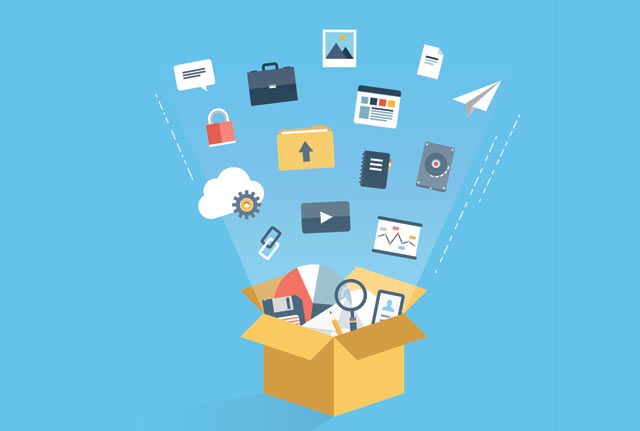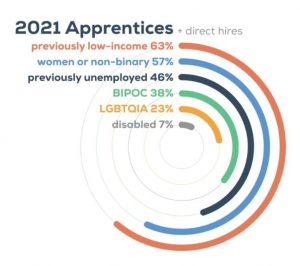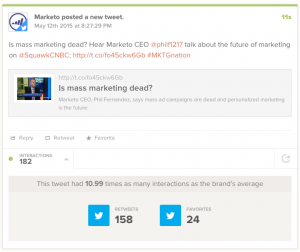
The unending march of progress is both an opportunity, and also a challenge for the advertising production professional. Modern ad delivery solutions can go a long way in helping deal with these challenges.
Looking back at the history of TV advertising, and we see an industry driven as much by technological advances as it is by creativity. New recording media and editing systems have fundamentally transformed the production process from the slow and delicate film-based work of the 1940s to the fast, flexible HD digital workflows of today.
Today, we live in an era of accelerating change. Software and camera manufacturers keep up a breakneck pace of innovation. New standards emerge every few years from the working committees of standards-development organizations. TV stations have ever-evolving guidelines and material requirements.
Let’s take a look at some of the upcoming challenges facing the production professional – and how you can deal with them using the right tools.
Bigger files, more file formats
From SD to HD to 4K, camera manufacturers have been pushing up the resolution of their cameras. Raw footage will increasingly be supplied in 2K or 4K resolutions as standard.
To deal with these larger files and higher resolutions, we will need more powerful hardware and software.
But a greater challenge comes during the delivery stage. With TVCs today being sent not just to TV stations but also to online video hosting platforms, we are seeing a proliferation of formats that we need to deliver in.
This means that during the time-critical final stages of production, we often find ourselves in a situation of having to encode, QC, and deliver multiple versions of the same finished TVC:
– Down-convert to SD for standard broadcasts
– Down-convert to HD for TV stations broadcasting in HD
– Efficiently encode the original 2K/4K resolution for clients’ archives
– Variety of formats for various online destinations and video platforms
The enhanced capabilities of delivery platforms will play a critical role in making this translation between resolutions as painless as possible. More and more, these systems have the built-in intelligence and processing power to:
– Know the required formats for the different stations and destinations
– Optimize, encode and check your files accordingly
As opposed to having to race the deadline to encode and upload multiple versions of the finished advertisement, time-poor production staff can simply supply a single master in the native production resolution, and let the delivery platform take care of repurposing it for their various destinations.
Shifting broadcast requirements
While broadcasters are less susceptible to rapid format and standards changes (case in point: many are still airing in SD, despite the drive towards digital HD), it remains a fact that they, too, are dealing with a shifting landscape of regulatory requirements and new standards that emerge with technological changes.
And because of the relatively slow rate of change, it can be easy to get caught out when TV stations do make changes to their broadcast requirements.
The advanced advertising delivery platforms of today eliminate that worry, since the requirements of each station are baked in to the file checking system.
Once uploaded, the system checks that the file is compliant with the particular broadcaster’s current technical requirements and the appropriate regulations relating to things like video quality and audio loudness, before sending it onward.
Apply this across multiple destinations, each with their own requirements, and it’s easy to see how the delivery platform can make post-production work a whole lot easier.
Demand for faster reporting and stats
Clients today want greater oversight over how and where they are spending their money. In the paper “The Data-Driven Future of Video Advertising”, Nielsen and Simulmedia pointed out that as the television advertising platform becomes increasingly digitized and automated, rich data and metrics will become more and more important.
If we look at other parts of the advertising industry, we see that the trend towards automation is not a vague future concept – it is here, now. Whether you are talking about programmatic media buying, fulfilment or post-broadcast audience metrics, the common thread is for algorithms and computer programs to move information at increasing speeds.
This trend, which started in the online advertising space, is quickly trickling down to TV advertising, as clients demand of the “traditional” advertising platforms the same transparency that they get online.
There is currently a substantial delay between when the commercial actually airs, and when the advertisers get confirmation of the fact.
Contributing to this delay is the daily process that broadcasters use to collate the information regarding the commercials that ran during the day, reconcile that information against bookings and orders, before sending invoices out to the agencies.
The future lies in the ability for advertising delivery platforms to integrate the reporting of when commercials are aired, creating end-to-end visibility into the status of an ad, from booking to delivery to acceptance and broadcast.
This data is already available, and, once negotiations with broadcasters pave the way, it will be a fairly simple matter of tying that information into an automation platform in order to provide near-real-time status updates of where commercials are playing from and whether they played, the duration they played for, etc.
Advertisers obviously would benefit from this end-to-end visibility, but broadcasters can also take advantage of this to speed up and automate their invoicing runs, since airing confirmation would have been automatically handled already.
Changing work practices
Mobile technologies and an increasing awareness of the importance of work-life balance means a greater demand for flexible work practices.
Whether you are going on location for shoots, or working from home, or at a conference, the era of being chained to a desk, tapping away at a desktop computer, is over.
It makes sense that the tools we use for advertising production should be similarly flexible. And that is true for advertising delivery platforms now. No longer confined to the desktop, sophisticated ad delivery systems can now be run directly from the browser.
The move to HTML5 user interfaces, as well as mobile apps, means being able to manage production process and access all your advertisements using just a phone – even when you are on location and away from the office.
The mobile access to these delivery platforms also allows you to quickly get live updates of the status of deliveries, and to solve client problems even when you are out of the office.
—
One of the most exciting parts about working in this industry is the fast pace of change. With the latest tools and solutions dealing with the day-to-day challenges thrown up by these changes, you can work efficiently and effectively, while keeping an eye on the opportunities of the future.
Business & Finance Articles on Business 2 Community
(334)
Report Post







